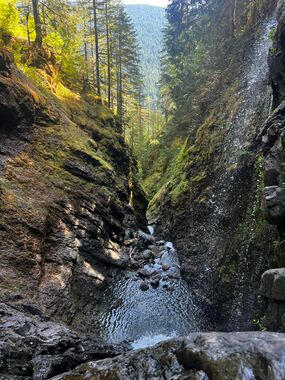Tatoosh Canyoneering Canyoning Caving
The following coordinate was not recognized: strong class="error">Expression error: Unexpected < operator.</strong>000000000000000000000000. |
| Rating: |
Log in to rateLog in to rateLog in to rateLog in to rateLog in to rate 0.0 (0 ratings) |
|

|
| |
Raps:max ↨118ft Yes Shuttle:None Rock type:Basalt |
|---|
| Start: |
The following coordinate was not recognized: strong class="error">Expression error: Unexpected < operator.</strong>000000000000000000000000."Expressionerror:Unexpected" can not be assigned to a declared number type with value 0.
|
|---|
| Parking: | |
|---|
| |
|---|
| Condition Reports: |
(log in to submit report)
|
|---|
Weather: |
|
|---|
| Best season: |
July-Sept | winter | | spring | | summer | | fall |
|---|
| Dec | Jan | Feb | | Mar | Apr | May | | Jun | Jul | Aug | | Sep | Oct | Nov |
|
| Regions: |
|
Expression error: Unexpected < operator.000000000000000000000000Expression error: Unexpected < operator.000000000000000000000000topo
GPS data automatically extracted from [], please visit their site for more detailed information.
Automatic GPS data extraction NOT allowed, please visit [] to download GPX.
(log in to submit reference picture)
| Welcome! Canyons in the Pacific Northwest can be different from those you might be used to. Be ready for unlinked bolts, retrievable traverse lines, and challenging aquatic environments. For more on local practices, and the best way to get started in the region, check out the WCC Safety page.
- Unlinked Bolts - groups should be comfortable rigging unlinked bolts, either temporarily linking them for all but the last person, or using a passive redundancy method. Most importantly, if you find two bolts side by side that are unlinked, do not add webbing to them. Linking bolts designed to be unlinked will likely cause damage during seasonal floods.
- Traverse Lines - many canyons are rigged to allow traverse line access to an exposed anchor station. This should be done using self-belay or team belay techniques. Do not leave fixed lines in the canyons.
- Challenging Environments - the highly aquatic nature of PNW canyons can surprise many. Cold temperatures, slippery rocks, loud waterfalls, and strong currents all lead to unexpected problems. Do not underestimate the need for strong team work and technical proficiency. Belays are frequently not possible. Unattended gear will sink or float away. Sliding and jumping is the cause of most major injuries, so it's critical to effectively communicating water depth & submerged hazards.
|
Introduction[edit]
Tatoosh is a special place located in the Tatoosh Wilderness.
Approach[edit]
While many ways are available, the shorted is by parking in MRNP and heading down to the Muddy Fork Cowlitz. Crossing the Cowlitz could be the most challenging aspect of the trip. The FD team found an advantageous log and used it to cross. It may not alway be there so be extremely cautious and experienced in changing swiftwater conditions.
Descent[edit]
The creek has many waterfalls. The FD team went into the most commiting section.it is marked by a large double waterfall that falls into a tight slot section. We did not get exact measurements but nothing was over 60m and the large, double fall has a rebelay at the hanging pool.
The FD team camped above the muddy fork and crossed the following morning. The river rose 4-6 inches between crossings. It is perpetually cloudy and hard to judge in depth.
Red tape[edit]
You’ll need a NP pass and a wilderness permit.
Beta sites[edit]
Trip reports and media[edit]
Background[edit]
The canyon was first scouted by Tim Burke, Melinda Muckenthaler, and later by Jake Huddleston. FD team was Andrew Humphreys, Mike Peterson, Haruka James Clay Lipscomb, Kevin Steffa, Joseph Cruikshank, and Ryan Ernst.
